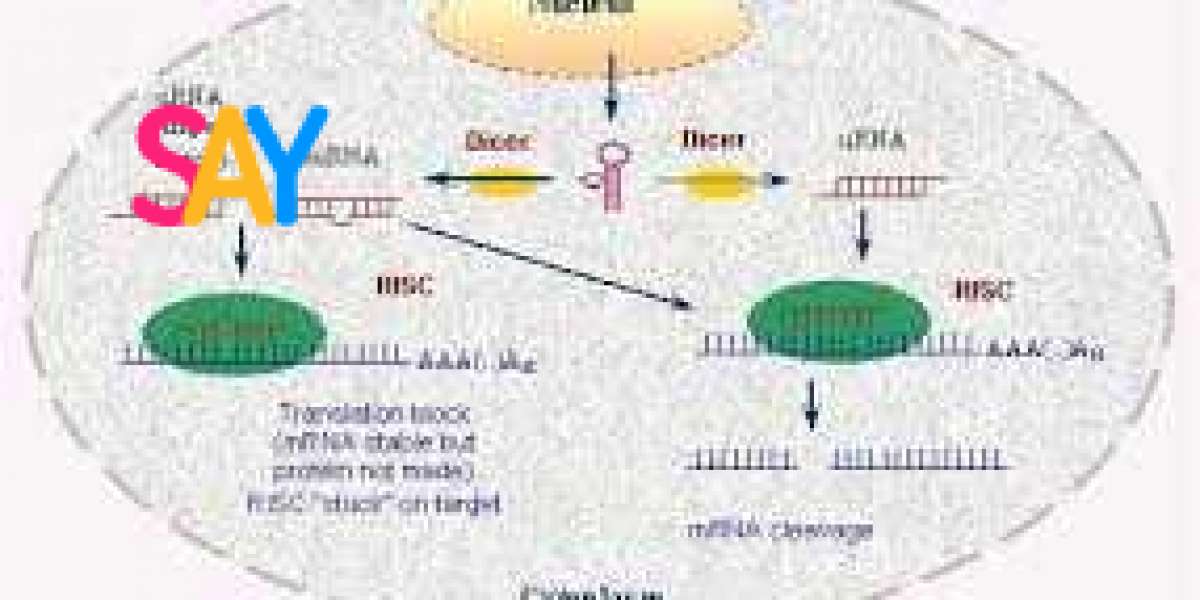RNA interference (RNAi) is a naturally occurring biological process that has revolutionized the field of molecular biology and biotechnology. Discovered in the 1990s, RNAi has since become a cornerstone in genetic research and therapeutic development. This article explores the mechanism of RNAi, its applications, and its potential to transform medicine and agriculture.
Understanding RNA Interference
RNAi is a cellular process in which small RNA molecules inhibit the expression of specific genes. This process is mediated by two main types of small RNA: small interfering RNA (siRNA) and microRNA (miRNA). Both types play a critical role in post-transcriptional gene regulation.
The Mechanism of RNAi
The RNAi pathway begins when double-stranded RNA (dsRNA) enters the cell. This dsRNA is cleaved by an enzyme called Dicer into short fragments of about 20-25 nucleotides. These fragments, known as siRNA or miRNA, are then incorporated into a multiprotein complex called the RNA-induced silencing complex (RISC). Once assembled, the RISC uses one strand of the RNA fragment as a guide to recognize and bind complementary mRNA molecules. The RISC then either degrades the target mRNA or prevents its translation, effectively silencing the gene.
siRNA vs. miRNA
Although siRNA and miRNA share similarities, they differ in origin and function. siRNA is typically derived from exogenous dsRNA, such as viral RNA, and is highly specific to its target. In contrast, miRNA is endogenously produced and often regulates multiple genes by partial complementarity to target mRNAs. This broader regulatory scope makes miRNA a crucial player in cellular homeostasis and development.
Applications of RNAi
The ability to selectively silence genes has made RNAi a powerful tool in various fields, from basic research to therapeutic development.
1. Gene Function Studies
RNAi has become an indispensable tool for understanding gene function. By silencing specific genes, researchers can study their roles in cellular processes, development, and disease. High-throughput RNAi screens have identified genes involved in cancer, neurodegenerative diseases, and metabolic disorders, providing insights into their underlying mechanisms.
2. Therapeutic Applications
RNAi-based therapies hold immense promise for treating genetic disorders, infections, and cancers. The first RNAi drug, Patisiran, was approved by the FDA in 2018 for treating hereditary transthyretin-mediated amyloidosis. This landmark approval has paved the way for numerous RNAi-based therapies targeting conditions such as hepatitis B, hypercholesterolemia, and rare genetic diseases.
Challenges in RNAi Therapeutics
Despite its potential, RNAi therapy faces several challenges:
Delivery Systems: Ensuring that siRNA molecules reach their target cells and tissues without degradation is a significant hurdle. Lipid nanoparticles and viral vectors are among the strategies being developed to address this issue.
Off-Target Effects: siRNA can sometimes bind to unintended mRNAs, leading to off-target effects. Enhancing the specificity of RNAi molecules is a key area of ongoing research.
Immune Activation: Exogenous RNA can trigger immune responses. Chemical modifications of RNA molecules can mitigate this risk, improving the safety of RNAi therapies.
3. Agricultural Biotechnology
RNAi has transformed agriculture by enabling the development of crops with improved traits. For instance, RNAi has been used to:
Enhance Pest Resistance: RNAi-based strategies target essential genes in pests, reducing their ability to damage crops.
Improve Nutritional Content: By silencing specific genes, researchers have enhanced the nutritional profile of crops like rice and maize.
Combat Plant Diseases: RNAi can protect plants from viruses by targeting viral RNA, offering an environmentally friendly alternative to chemical pesticides.
4. Functional Genomics
RNAi has enabled genome-wide studies to identify gene networks and pathways. These studies have provided valuable insights into cellular processes, such as signal transduction and metabolic regulation, advancing our understanding of biology.
Advances in RNAi Technology
Technological advancements have expanded the utility and efficiency of RNAi. Some notable developments include:
1. Synthetic siRNA
The synthesis of chemically modified siRNA molecules has improved their stability, specificity, and efficacy. These modifications enhance the delivery and reduce off-target effects, making synthetic siRNA suitable for therapeutic applications.
2. CRISPR and RNAi Integration
The integration of RNAi with CRISPR-Cas9 technology has created a powerful toolkit for gene editing and regulation. While CRISPR excels in permanent gene disruption or correction, RNAi offers reversible and tunable gene silencing. This synergy allows for more precise genetic manipulation.
3. High-Throughput Screening
High-throughput RNAi screening platforms enable the rapid identification of gene functions and drug targets. These platforms use libraries of siRNA or shRNA (short hairpin RNA) to silence thousands of genes, providing a comprehensive view of gene interactions.
Ethical and Regulatory Considerations
The widespread use of RNAi raises important ethical and regulatory issues. For instance, the use of RNAi in genetic modification of crops and organisms has sparked debates about biosafety and environmental impact. Regulatory agencies like the FDA and EPA oversee RNAi applications to ensure their safety and efficacy. Transparency and public engagement are essential for addressing ethical concerns and building trust in RNAi technologies.
The Future of RNAi
The potential of RNAi remains vast, with ongoing research aiming to overcome current limitations and unlock new applications. Key areas of future development include:
Personalized Medicine: RNAi can be tailored to individual genetic profiles, enabling precision therapies for complex diseases.
Combination Therapies: Combining RNAi with other treatments, such as immunotherapies or small-molecule drugs, could enhance therapeutic outcomes.
Environmental Applications: Beyond agriculture, RNAi could address environmental challenges, such as controlling invasive species or mitigating pollution.
Conclusion
RNA interference has transformed our understanding of gene regulation and opened new frontiers in science, medicine, and agriculture. While challenges remain, the advancements in RNAi technology and its applications promise a future where genetic diseases are treatable, crops are more resilient, and our understanding of biology continues to deepen. As researchers and innovators harness the power of RNAi, its impact will undoubtedly shape the future of biotechnology and beyond.




